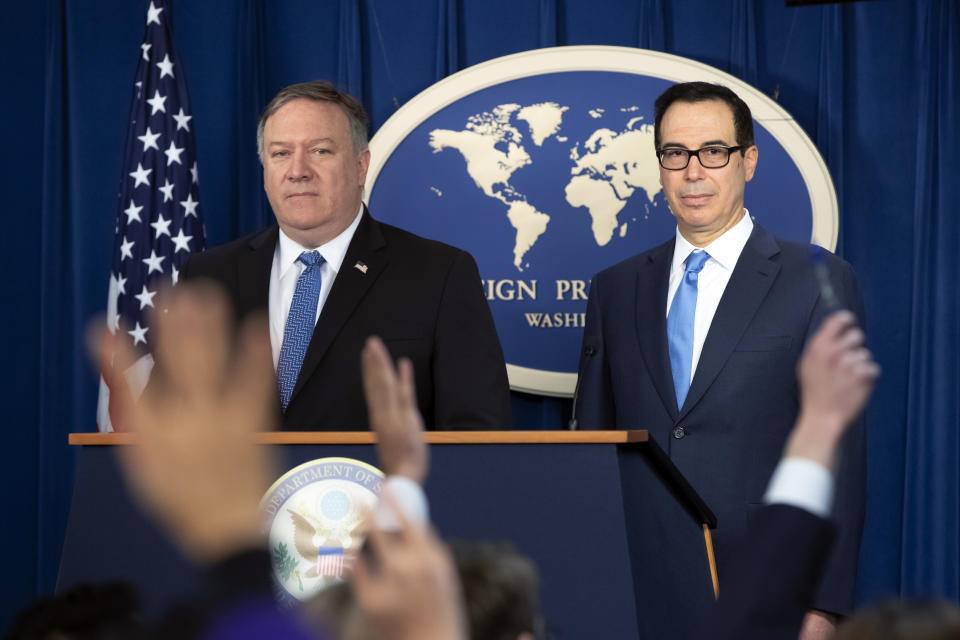The ballooning US debt is like the 'boiling frog'
Investors are starting to worry about the massive increase in debt issued by the U.S. Treasury Department. The latest being BlackRock CEO Larry Fink.
Fink said the U.S. was heading towards a “supply problem” as the widening budget deficit, expected to top $1 trillion each year starting in 2019, requires more borrowing.
Senate Majority Leader Mitch McConnell said in a speech Wednesday that further spending increases could be on the docket for the newly divided Congress, telling reporters he had reached out to House Minority Leader and expected Speaker of the House in 2019, Nancy Pelosi, about working on an infrastructure bill. It was a cause President Trump had championed during his campaign.

“We are going to have more and more debt because of the deficits, and because of the deficits, the investors are going to demand a bigger premium,” he said. “We have greater risk for higher rates and will not allow the equity markets to flourish.”
An ‘onslaught’ of bonds
The run-up in stocks since President Donald Trump’s election has been based largely on the expectation and delivery of de-regulation and tax cuts. It turns out that not only are the tax cuts politically unpopular and starting to run out of steam, but they’re creating a massive debt pile.
The Treasury Department announced last week that it would be issuing a record $83 billion quarterly refunding sales of long-dated bonds. That’s higher than the previous high when Treasury was fighting off the financial crisis in 2009-10.
Next year, the market will see what Wells Fargo analysts called “an onslaught” of bonds, an expected $1.4 trillion, which is double the issuance just two years ago in 2017.

“That could be the real issue related to everything: where we have interest rates becoming too high to sustain the economy with its growth rates,” Fink added.
‘A real consequence for U.S. consumers’
The pile-up in Treasury issuance that has come along with the tax cuts has been a subject of discussion for some time among bond market analysts, but appears to have made its way into the broader market conversation recently.
“We’ve literally been pounding the table on this topic for a while now and it’s finally becoming an issue,” Subadra Rajappa, head of U.S. rates strategy at Societe Generale, told Yahoo Finance.
Even before interest rates become too high to sustain the economy, as Fink worries, consequences of the increased “supply problem” could start to be felt by average Americans. Higher Treasury yields will increase the cost of mortgages, auto loans and other credit that is tied to U.S. interest rates, slowing an already sluggish housing market and stifling business expansion and growth.
“Worst-case scenario, there’s a buyers strike on the U.S. Treasury market,” Gennadiy Goldberg, interest rates strategist at TD Securities, told Yahoo Finance. “If that happens then rates will have to rise dramatically. You’ll see that in things like mortgage rates and auto loans. It doesn’t just cost the U.S. more to fund debt, it costs the average consumer more to obtain a mortgage or car loan and that’s actually a real consequence for U.S. consumers.”
As Goldberg points out, the more debt the U.S. issues the more it has to pay in interest to holders of that debt, and as interest rates rise the bonds get more expensive and the debt rises further. That means other services, such as food stamps or health insurance or care for the military, may have to be cut or that taxes will have to rise.
‘We’ve likened it to the boiling frog’
“Eventually it’s certainly possible and the risk is that yes a substantial portion of U.S. spending is going to have to go towards debt servicing over the next couple decades,” he said. “It will cost us a lot. That certainly will be felt through at some point.”
A reduction in the appetite for U.S. Treasury bonds has already begun, as auctions increasingly have shown less buyers for U.S. Treasuries and weaker demand overall. Russia, Turkey and Japan are buying historically low levels of American bonds and China, the largest foreign holder of U.S. debt, is buying much less than they did previously.
The Federal Reserve, the largest overall holder of U.S. debt, is cutting back as well, having announced a plan to cut back on buying U.S. government bonds by $30 billion a month to shrink its $4 trillion balance sheet.
“We’ve likened it to the boiling frog,” said TD’s Goldberg of the growing debt problem. “It’s a very slow increase in temperature and you don’t realize it’s a problem until the water boils.”
—
Dion Rabouin is a global markets reporter for Yahoo Finance. Follow him on Twitter: @DionRabouin.
Follow Yahoo Finance on Facebook, Twitter, Instagram, and LinkedIn.
See also:
Wall Street managers have cost Americans more than $600 billion over the past decade
It’s the end of the world as we know it, and investors feel bullish
The dollar’s status as the world’s funding currency is in question
Why Trump’s trade war hasn’t tanked the market or the economy yet
Follow Yahoo Finance on Twitter, Facebook, Instagram, Flipboard, LinkedIn, and reddit.
